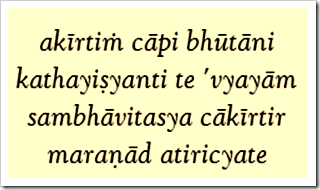Boys were the problem children a decade ago, and dozens of books sought to help. Now, girls are at risk, with drinking and self-harming on the rise, and a new industry is just beginning
Joanna Moorhead
The psychotherapist is Steve Biddulph, and most of the people queuing up to hear him are the mothers of teenage girls. A few years ago Biddulph toured Britain warning of a crisis facing boyhood: now he is back with a similar message about girlhood. And if the audience here is anything to go by, he's definitely touched a nerve. "Parents of girls are seriously worried about their daughters," says Saffia Farr, editor of Juno magazine and the organiser of the Bristol part of Biddulph's country-wide tour. "They feel there's this overwhelming tide of advertising that's targeting their daughters, of inappropriate clothing being sold in the shops, of media messages that encourage their girls to grow up way, way before their time. And they want to know what they can do about it."
Telling them what they can do about it is Biddulph's mission. "A few years ago, boys were a disaster area – there was an epidemic of ADHD, they were underperforming in exams, they were drinking too much and getting involved in wild behaviour," he says. "Back then, girls seemed to be doing just fine. But, about five years ago, that all changed – suddenly, girls' mental health started to plummet. Everyone knew a girl, or had a girl themselves, who had an eating disorder or who was depressed or was self-harming. It was a huge change in a very short period; I started to investigate why this was happening."
Biddulph lives and works in Australia, but the crisis he sees brewing for young girls seems to be echoed across the Western world – and, in Britain, the figures suggest it's worse than in other countries. A few weeks ago, the charity Childline announced a 68 per cent increase in youngsters contacting them about self-harming, and said most of the increase was among girls. The problem also seemed to be affecting teenagers at a younger age, with 14-year-olds now likely to be among callers.
Anxiety and depression in teenage girls is also on the rise: research from the Nuffield Foundation last year found that the proportion of 15- and 16-year-olds reporting feeling frequently anxious or depressed has doubled in the last 30 years, and is more common in girls: it has jumped from one in 30 to two in 30 for boys, and from one in 10 to two in 10 for girls. Meanwhile, a report from the Department of Health found teenage girls in Britain are more likely to binge drink than teenage girls anywhere else in Europe; more than half of 15- and 16-year-olds admit they drink to excess at least once a month. A separate report in 2011 found that one in five girls in this age bracket who drink at least once a week have drunken sex and later regret it.
Anorexia and bulimia are also dramatically on the increase: official figures for hospital admissions released last October pinpointed a 16 per cent rise in hospital admissions for eating disorders, and showed that one in every 10 of these admissions was a 15-year-old girl.
"There's plenty to be concerned about," Biddulph says. "Everyone who has a teenage daughter right now sees this, in their child and among their child's friends." The people they blame, he says, are the advertising industry and the media. "They are driving girls' sensibilities and making them miserable. The corporate world has identified them as a new market for products, and is preying on them." During his talk, Biddulph describes teenage girls as being out in the wilderness, surrounded by hyenas: it's starting to get dark, he tells his audience, but they are all alone out there.
His message, though, is one of empowerment: he encourages parents to get together, to challenge the advertising industry and to lobby the Government to impose more restrictions on advertisers.
"Take the drinks industry – about 30 per cent of the market is sales to underage drinkers," he says. "Alcohol companies are extremely powerful – but parents are powerful, too, and they have to stand against this and stop the marketing of alcopops and push for a higher drinking age."
But the battle needs to be fought on a domestic as well as a policy front. "What we need to do is re-evaluate how we think of teenage girls: the current philosophy is that they're growing older, so they need us less. But I believe that teenage girls go through a kind of second babyhood, and they in fact need their parents more than ever. We have to spend time with our daughters at this age: talk to them, listen to them, keep in touch with them. Staying connected to their parents makes all the difference to how they cope with the pressures they're up against."
Case study
Lindsay Julian, 51, lives in Salisbury. She has three daughters: Emily is 24, Olivia is 14, and Amelia is 11. She also has a son, Alexander, 28
"Emily got into drinking when she was about 15, and she started taking drugs fairly soon after that. It was a real roller-coaster time for all of us: sometimes she'd drink a lot and run off, and we'd have no idea where she was. One time, she didn't come back all night, and we ended up calling the police. They were difficult times.
"There are so many pressures on young girls today – you're very aware of that as a mother of daughters. So when my younger girls got close to the age where things got difficult with Emily, I thought: we're going to do things differently this time round. I sent them to a Steiner school, where I think the pressures are lessened: the philosophy is holistic, it's not all about exam results, which I think can be very stressful for young girls.
"Some of my daughters' friends spend a lot of time on social media, texting and on Facebook – but I'm careful to limit those things for my girls, and it does make a difference. They watch TV but I monitor it – in some homes, TV seems like a third parent, and I don't want it to be like that in our house. A lot of teenage girls never switch off, they're constantly connected, and that puts them under pressure from one another as well as from advertisers.
"We've got friends where you can see that their 14-year-olds are more like adults; the wanting to drink, to go to parties all the time.
"Emily is fine now: things turned around for her eventually, and she now works as a researcher and has written a book. She's a rock for her younger sisters and I'm very proud of her. I know you could say that she was OK in the end, but I don't think it's an experience I'd want to go through with my younger daughters. I think their adolescence could be happier, and less fraught, than Emily's was."
Source: The Independent
Posted by
Robert Karl Stonjek
Robert Karl Stonjek
 “Unable to get the desired result, some made an excuse and stayed where they were, while others went to see the bow. Like a monkey examining a coconut, they each sat back down with their heads hanging down.” (Janaki Mangala, Chand 11.1)
“Unable to get the desired result, some made an excuse and stayed where they were, while others went to see the bow. Like a monkey examining a coconut, they each sat back down with their heads hanging down.” (Janaki Mangala, Chand 11.1) “People will always speak of your infamy, and for one who has been honored, dishonor is worse than death.” (Lord Krishna, Bhagavad-gita, 2.34)
“People will always speak of your infamy, and for one who has been honored, dishonor is worse than death.” (Lord Krishna, Bhagavad-gita, 2.34) In the Bhagavad-gita, Lord Krishna tells Arjuna that for a celebrated warrior, dishonor is worse than death. This is because they were previously honored. They were known for some reason or another. Through dishonor, they tarnish their reputation. The eager journalists pay close attention to scandal for this very reason. If they can take down a celebrated figure through reporting their flaws, their story will be very popular. The dishonor will draw much attention because it is focused on someone who was previously honored. Dishonor to someone who was never honored isn’t as important.
In the Bhagavad-gita, Lord Krishna tells Arjuna that for a celebrated warrior, dishonor is worse than death. This is because they were previously honored. They were known for some reason or another. Through dishonor, they tarnish their reputation. The eager journalists pay close attention to scandal for this very reason. If they can take down a celebrated figure through reporting their flaws, their story will be very popular. The dishonor will draw much attention because it is focused on someone who was previously honored. Dishonor to someone who was never honored isn’t as important.








